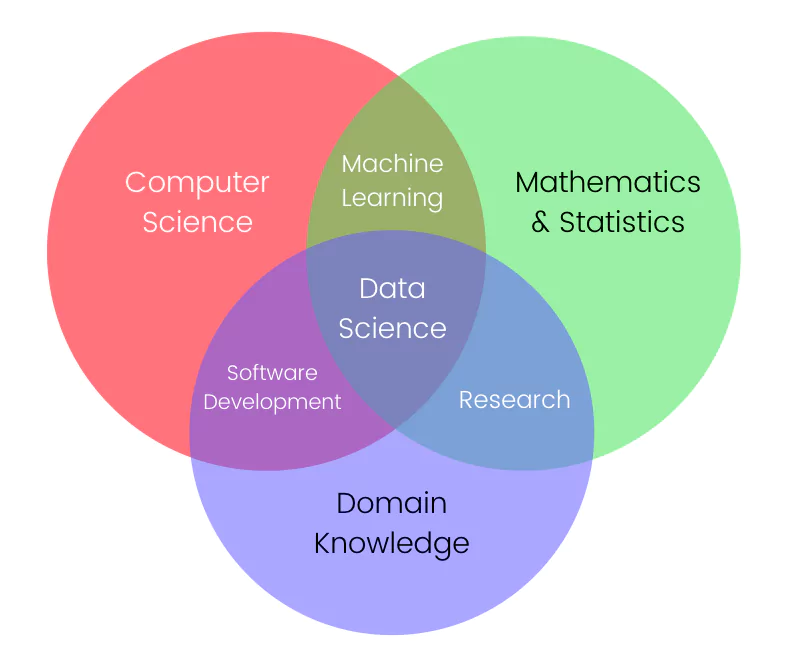Now that everyone is obsessed with data and artificial intelligence, choosing the right career can be a real headache. With no clear definition of different data roles, it’s easy and expected to be confused about what you should study. Several new job titles emerged recently, all overlapping but yet different: data scientists, data analysts, data engineers, machine learning engineers, business intelligence developers, and the list goes on.
For the scope of this blog, we will discuss two main data roles: Data Scientist and Machine Learning Engineer.
At the end, you’ll be able to answer the following questions:
- What is the difference between Machine Learning (ML) and Data Science (DS)?
- What skills are required to become an ML Engineer and Data Scientist?
- What are the responsibilities of an ML Engineer?
- What are the responsibilities of a Data Scientist?
Data Science vs Machine Learning
I’ve always liked to start by defining Data Science as simply the science that deals with data for the sake of studying it. This includes several tools and techniques drawn from many fields such as statistics, computer science, information technology, domain knowledge, and much more.
Another definition of data science that I came across is ‘The extraction of actionable insights from raw data’. In other words, data science focuses on extracting knowledge from datasets and applying it to solve real problems. The process involves a lot of steps from data processing to data analysis, building data-driven solutions, and most importantly data visualization & storytelling.
On the other hand, machine learning is defined as simply algorithms that can learn from data, extract hidden patterns and accomplish intelligent tasks without being explicitly programmed. It gives computers the ability to understand data and perform predictive analytics without human intervention. As a subset of artificial intelligence, the main goal of ML is building predictive models that can learn from experience and adjust to new unseen data.
Both Data Scientists and Machine Learning Engineers need to understand data but each from its own perspective. A data science task could be something like: Why do users hate this product? Whereas a machine learning model could answer a question such as: What is the probability of users hating this product?

As shown in the above diagram, data science intersects with many fields, one of which is machine learning. But this isn’t the only fact leading to the confusion between both careers and here’s where we talk about job descriptions.
Similarities and differences
Whether you’re a data scientist or an ML engineer, you should have strong programming skills, you’ll be dealing with data and working with algorithms. So what are the key differences?
A data scientist may come from a background in statistics and mathematics. Having strong statistical skills, his role is to decide what data and analytics are needed to understand why this is happening. For example, why are customers leaving, or why is this product or service not selling… Based on such analysis, a data scientist can build a model to predict which customers are most likely to leave.
On the other hand, an ML engineer comes from a software development/engineering background. His focus is on building models(predictive models), bringing them to production, and monitoring their performance.
Because of the unclear definition of each role, we agree that some of the data scientist responsibilities overlap with the ones of an ML engineer and sometimes a data engineer.
A data scientist needs to know how to scrape data, should be familiar with databases (SQL and No-SQL), data warehouses, data lakes, and data processing.
So in terms of tools, he should have a strong knowledge of:
- Hadoop
- Map Reduce
- MySQL
- MongoDB
- Beautiful soup
- Selenium
Now the last phase of a data science project is data storytelling where the data scientist communicates his findings to a technical/non-technical audience through reports, visuals, and dashboards.
To accomplish this, he needs some business intelligence tools such as:
- Tableau
- Power BI
- QlikView
Or he can go with simple code-based dashboards using Plotly and Dash in Python.
However, a machine learning engineer focuses on pushing ML models to the production loop where he can always monitor its performance and scale to multiple users. So in terms of tools, an ML engineer should have a strong knowledge of cloud environments like AWS, GCP, Azure and the different testing/deployment/monitoring services such as:
- Docker
- Kubernetes
- MLFlow
- SageMaker
- Gradio
- Flask
Work hand-in-hand
We’ve put a great effort into differentiating data science from machine learning and I think the difference is clear now. However, the best way to deal with both fields is as one complements the otherO

In other words, ML engineers ensure that the raw data gathered from data pipelines are redefined as data science models that are ready to scale as needed. So the model built by the data scientist can be improved and embedded into a mobile application by the ML engineer and therefore the insights become actionable.
Conclusion
Now that you’re familiar with both data roles, it’s easier to decide which one suits you best. But, the debate is endless and whether you choose to be a data scientist or an ML engineer, you’ll be working with cutting-edge technologies and manipulating data for different reasons. So keep in mind two very important points: first, you can’t go wrong with whatever choice you make; and second, there are a lot of common tasks between both roles so it’s better to think of it from a teamwork perspective because success is best when it’s shared!